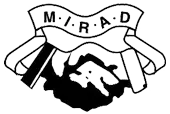Cruising Through Time A Journey of Cars and DL Reg Plates on the Isle of Wight
Reg Plates ArticleCruising Through Time A Journey of Cars and DL Reg Plates on the Isle of Wight

The Isle of Wight, a gem nestled off the south coast of England, boasts a rich history that extends beyond its charming landscapes and seaside towns. This history surprisingly intertwines with the fascinating evolution of cars and their accompanying identification markers – the DL reg number plates. Buckle up, as we embark on a captivating ride through time, exploring how automobiles and DL plates became an integral part of the island's story.
The Early Days: Horseless Carriages and the Dawn of DL
The internal combustion engine, the lifeblood of modern cars, sputtered to life in the late 19th century. The Isle of Wight, ever receptive to progress, witnessed the arrival of these "horseless carriages" around the same time. These pioneering vehicles, more contraptions than the sleek machines of today, were a novelty for islanders. Imagine the bewildered stares and curious whispers that followed these early automobiles as they rattled down the quaint island lanes.
Regulations were quick to follow the emergence of these new fangled machines. The Motor Car Act of 1903 mandated the registration and licensing of motor vehicles throughout Britain. The Isle of Wight, being a part of the administrative area, was assigned the unique identifier "DL" for its reg number plates. These early DL plates were likely simple metal plates with black lettering and numbering, a stark contrast to the colourful and personalised plates we see today.
DL Reigns Supreme: A Golden Age of Motoring
The early decades of the 20th century witnessed a surge in car ownership on the island. The convenience and freedom offered by automobiles outweighed the initial scepticism. From doctors making house calls to families embarking on scenic island tours, cars became a ubiquitous sight. The iconic DL prefix proudly displayed on these vehicles served as a badge of islanders' growing embrace of modern technology.
A delightful anecdote from the County Press, a local newspaper, highlights the courtesy and responsible driving behaviour exhibited by islanders in those early days. A visitor from the mainland, accustomed to the hustle and bustle of city traffic, remarked on the surprising politeness and orderliness displayed by Island motorists. This paints a picture of a bygone era where driving on the island was a leisurely and respectful experience.
Reaching the Limit: The End of an Era for DL
As car ownership continued to rise, the limited capacity of the DL sequence became apparent. By October 1935, the unthinkable happened – the very last DL plate, DL 9999, was issued. This marked a significant milestone in the island's motoring history. The County Press documented this event, highlighting the island's surpassing of the 10,000 motor vehicle mark.
A New Chapter Begins: The Arrival of ADL
The exhaustion of the DL sequence necessitated a change. To accommodate the growing number of vehicles, a new prefix, "A," was introduced to precede the familiar "DL." The first-ever ADL reg plate, a symbol of this new era, was bestowed upon Lady Rowbotham of Brook Hill House. This event, much like the issuance of the final DL plate, was documented in the local press, signifying the significance of this transition for islanders.
The ADL prefix continued serving the island well for many years. However, as national registration schemes evolved, the Isle of Wight eventually transitioned to the standard UK registration format. Today, vehicles registered on the island sport plates with the "HW" identifier, a distinct marker for islanders on the national stage.
Beyond the Plates: A Legacy of Innovation
The story of cars and DL plates on the Isle of Wight extends beyond mere registration sequences. The island has also witnessed its fair share of automotive-related innovations. Local workshops and garages have played a crucial role in maintaining and modifying vehicles, fostering a culture of ingenuity and adaptation.
The island's scenic beauty has also attracted car enthusiasts and motor clubs. Events like classic car shows and vintage vehicle rallies celebrate the island's motoring heritage and keep the spirit of those early DL-plated automobiles alive.
Conclusion: A Lasting Impact
The journey of cars and DL reg number plates on the Isle of Wight is a fascinating microcosm of the island's embrace of progress. From the initial curiosity surrounding horseless carriages to the responsible driving culture of the early motorists, cars have become an undeniable part of the island's social fabric. The iconic DL prefix, though no longer in use, serves as a lasting reminder of a bygone era and the island's unique motoring history. The story continues to evolve with the "HW" plates and a thriving car culture, ensuring that the Isle of Wight remains a place where the love for automobiles flourishes alongside its timeless charm.
It all started back in 1991 when our love and obsession for private number plates was born.
Since then we have grown steadily over the years to become a leading light in the private number plate industry holding our own stock of high quality number plates and many thousands of registrations we are selling for trade and private clients including many celebrities and sports personalities.


- FREE TRANSFER SERVICE - your paperwork is handled by our trained team
- OVER 30 YEARS EXPERTISE - long established and trusted company
- DVLA RECOGNISED RESELLER - linked directly from the DVLA website
- TRADE ASSOCIATION MEMBERS - MIRAD and CN Guild members


